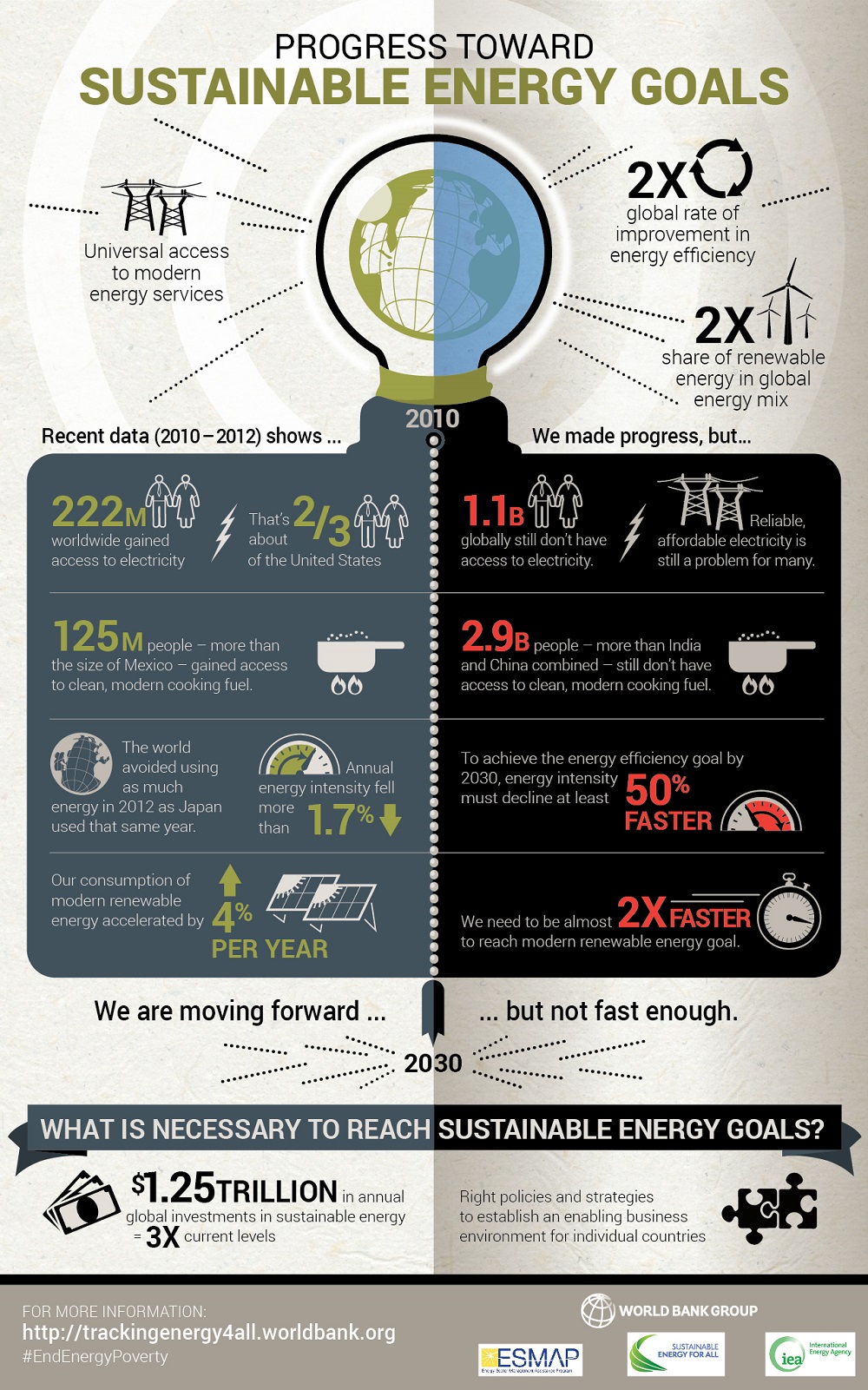News
Where does the world stand in reaching Sustainable Energy objectives?

The world is on the right track to make sustainable energy a reality for everyone by 2030, but that can only happen if countries dramatically accelerate their efforts and have access to the latest technology and additional investments, according to a report launched on Monday 18 May.
“Progress Toward Sustainable Energy: Global Tracking Framework 2015” gives a snapshot of how far the world has come in achieving universal access to modern energy, doubling the global rate of improvement in energy efficiency and doubling the share of renewable energy in the global energy mix and shows how much work remains to reach these objectives.
So what happened to global access to electricity between 2010 and 2012?
There have been notable advances in electrification – driven primarily by India – but progress in Africa remains far too slow.
-
Annual growth in access to electricity reached 0.6 percent, approaching the target growth rate of 0.7 percent required to reach universal access by 2030.
-
222 million people gained access to electricity. As a result, the share of global population with access to electricity rose from 83 to 85 percent, and the number of people without access to electricity declined from 1.2 billion to 1.1 billion.
-
125 million people got access to clean cooking fuel. But 2.9 billion people still use biomass fuels like wood and dung – most of them clustered in rural areas of Sub-Saharan Africa, South Asia and eastern Asia.
Global energy efficiency between 2010 and 2012:
Progress in reducing global primary energy intensity was substantial, though still only two-thirds of the pace needed to reach the Sustainable Energy For All (SE4All) objective.
-
The annual rate of efficiency improvement, as measured by primary energy intensity, equaled 1.7 percent over the tracking period, considerably more than in the base period 1990-2010. Still, the rate of improvement is much slower than the SE4All objective of an average annual 2.6 percent improvement between 2010 and 2030.
-
Avoided using 20 exajoules of energy in 2012 – more than Japan used that year.
-
Electricity transmission and distribution losses are falling, and many countries are using more-efficient gas-fired plants.
Global renewable energy consumption between 2010 and 2012:
The growth of renewable energy final consumption continued to accelerate, but the rate of progress will need to increase over 50 percent to achieve the SE4All objective.
-
The share of renewables in the global energy mix grew from 17.8 percent in 2010 to 18.1 percent, but still falls short of the 0.89 percentage point increase needed to achieve the objective.
-
Annual growth of modern renewable energy consumption (which excludes solid biofuels used for traditional purposes) stood at a rate of 4 percent. Still, that rate must be 7.5% to attain the objective with modern renewables.
-
Annual volume of renewable energy consumption increased to 2.9 exajoules, or the equivalent of Pakistan or Thailand’s energy consumption in 2012.
-
Renewable energy technologies accounted for half of all capacity additions. Lower technology costs, especially with solar photovoltaic cells, helped as well.
There are substantial gaps, but the good news is that they can be closed if the right steps are taken:
-
Annual global investments in energy will need to scale up three times to as much as $1.25 trillion. Of that, between $40 billion and $100 billion annually is needed to achieve universal access to electricity. Universal access to modern cooking fuels, by contrast, requires just $4.3 billion a year.
-
Countries with lower capacity will need access to state-of-the-art clean energy technology and associated knowledge.
-
Better understanding the link between energy and other key sectors such as water, agriculture, gender and health is critical to achieving sustainable energy goals.
Downloads:
» Summary Report (PDF, 5.55 MB)
» Key Findings (PDF, 3 MB)





